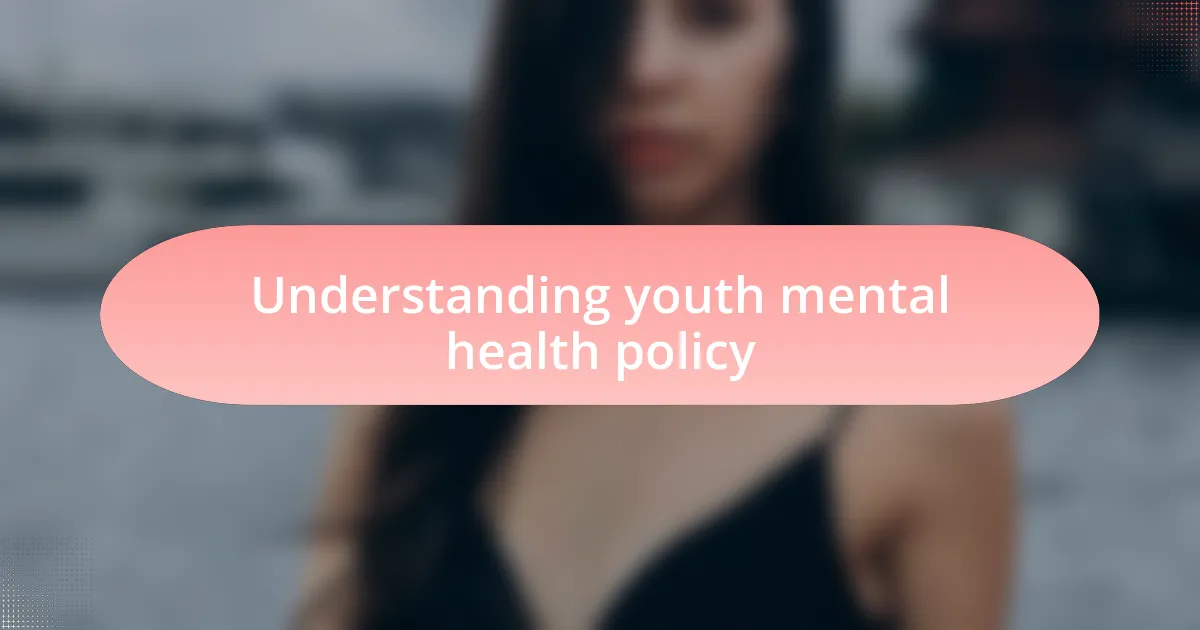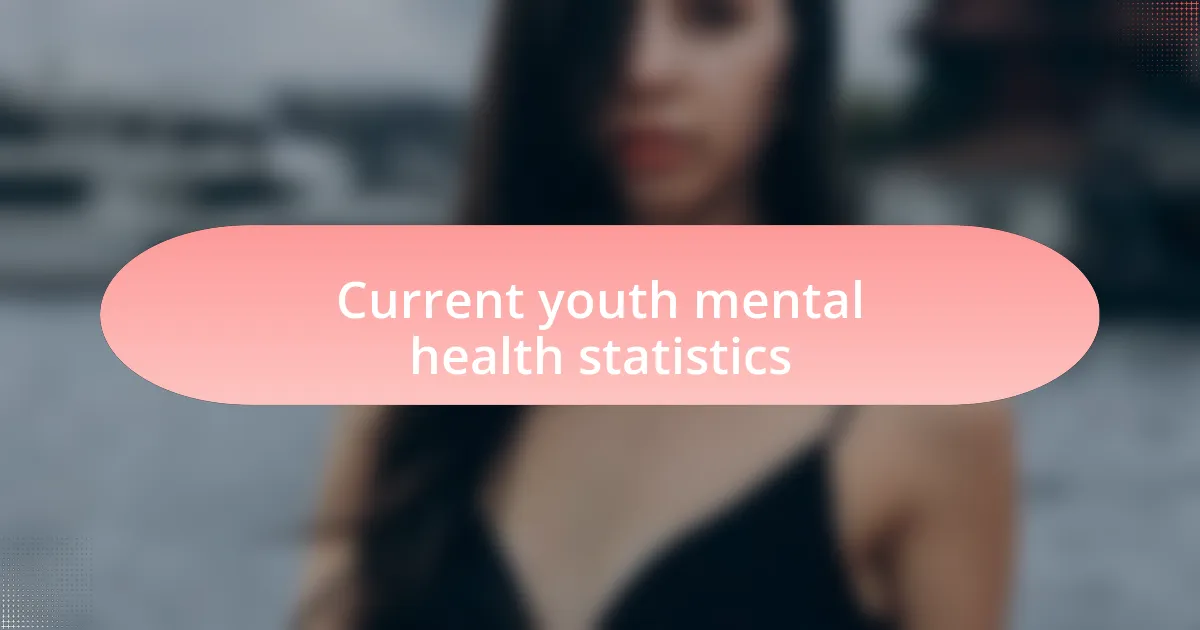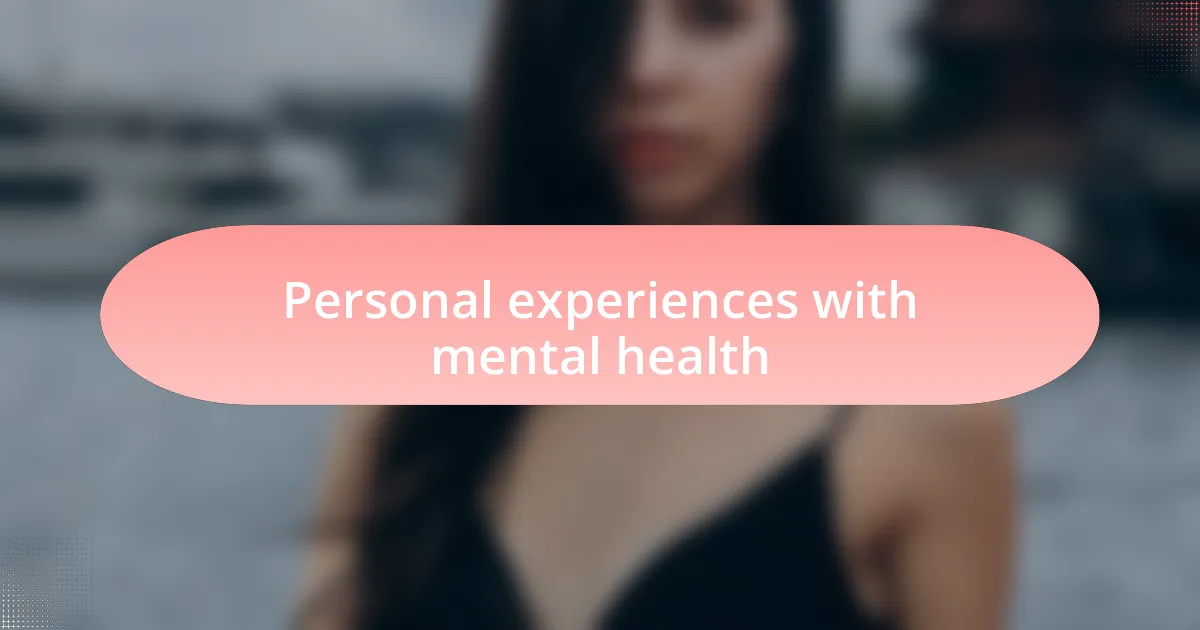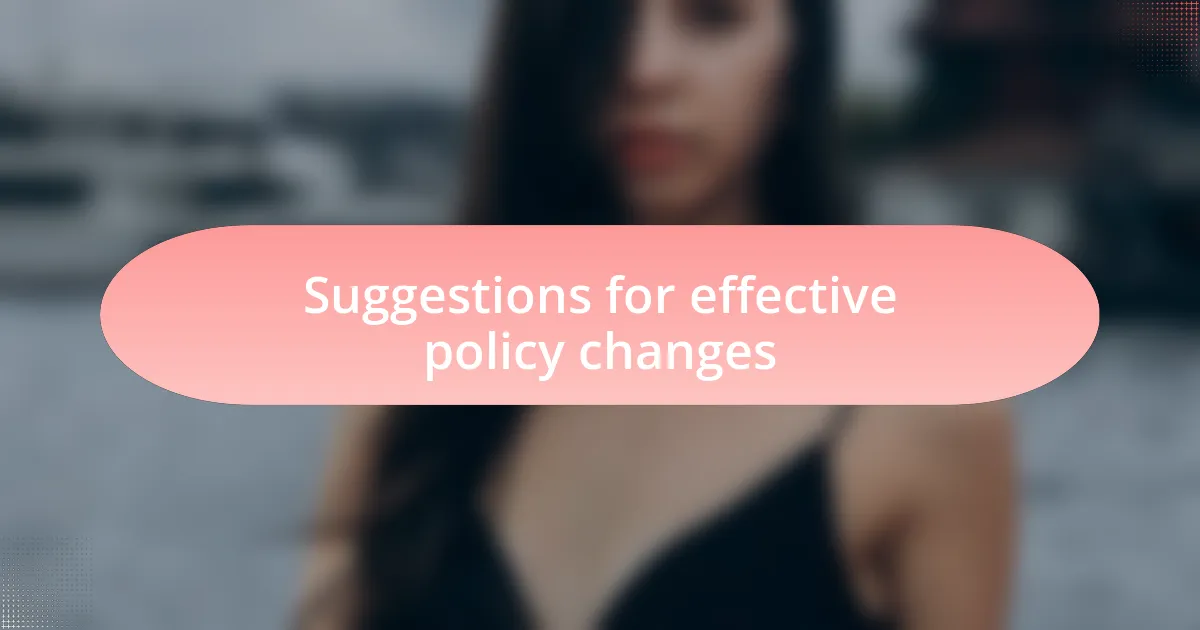Key takeaways:
- Nearly one in five adolescents experience mental health issues, yet only 20% receive necessary treatment, reflecting a critical gap in care and societal stigma.
- Personal experiences highlight the importance of open discussions about mental health in schools to help students feel less isolated.
- Effective policy changes include integrating mental health education in curricula, increasing funding for mental health resources, and promoting peer support programs.

Understanding youth mental health policy
Youth mental health policy is a vital framework that guides how we approach the mental well-being of adolescents. I often wonder, how much do we actually understand the struggles these young people face? Policies need to reflect not just statistics, but the lived experiences of youth grappling with anxiety, depression, and the pressures of modern life.
I recall a time when a friend of mine struggled silently with mental health issues during high school. It was a stark reminder that without robust policies, many youths might feel invisible and unsupported. Effective youth mental health policies should empower schools to create safe environments where students feel heard and valued.
Additionally, it’s essential to consider how these policies can adapt to the fast-paced changes in our society. Are they keeping up with the rise of social media and its impact on mental health? My experience tells me that policies must evolve alongside these challenges, ensuring that every single young person has access to the care they need, when they need it.

Current youth mental health statistics
Current youth mental health statistics reveal a troubling reality: nearly one in five adolescents experience a mental health condition, which is a staggering figure when you think about it. In my experience, this statistic often goes unrecognized, leaving many young people to endure their struggles in silence. Just imagine a classroom full of students; statistically, at least a few are quietly facing their own battles with anxiety or depression.
Moreover, the COVID-19 pandemic has exacerbated these issues, with reports noting a significant increase in depressive symptoms among youths. From my perspective, this uptick isn’t surprising, considering the isolation and uncertainty many young people faced during lockdowns. It’s a stark reminder of how quickly the mental health landscape can shift, and it compels us to rethink our approach to support and intervention.
Most alarmingly, only about 20% of youth with mental health conditions receive the necessary treatment. This statistic resonates deeply with me; it reflects not just a gap in access to care but a deeper societal issue of stigma and misunderstanding. If we don’t take this seriously, how can we expect our youth to thrive in a world that often overlooks their needs?

Personal experiences with mental health
Reflecting on my own journey, I remember feeling overwhelmed by the pressure to excel in school while grappling with anxiety. Those moments, hiding behind a smile while feeling like a storm was brewing inside, are etched in my memory. It’s disheartening to think that there were times I thought I was alone, not realizing that so many others shared similar struggles.
I vividly recall a friend who opened up about his battle with depression during a group project. It struck me that beneath the surface of academic competition, there were silent battles being fought every day. That conversation had a profound impact on me, reminding me of the strength it takes to seek help and the comfort found in shared experiences.
Sometimes, I wonder how different things might have been if we had more open discussions about mental health in our schools. My hope is that more students can find safe spaces to express their feelings, rather than carrying the weight of their struggles alone. This shift could change the entire narrative around youth mental health and empower others to seek support without fear.

Suggestions for effective policy changes
One effective policy change could be to integrate mental health education into the school curriculum. I remember a few classes in high school that briefly touched on emotional well-being, but they felt rushed and superficial. Imagine how impactful a dedicated course on mental health would have been, teaching students how to recognize signs of distress in themselves and others, and emphasizing the importance of seeking help.
Additionally, increasing funding for school-based mental health resources is crucial. Reflecting on my own experience, I often felt lost when trying to find help. If schools had accessible counselors and mental health professionals, it could foster a more supportive environment where students feel comfortable discussing their struggles.
Lastly, implementing policies that promote peer support programs can empower students to connect over shared challenges. I often found solace in talking to friends who understood my experiences, yet there was no formal structure to encourage those conversations. By training students as peer mentors, we could create a culture of empathy and understanding, allowing everyone to feel less isolated in their struggles.